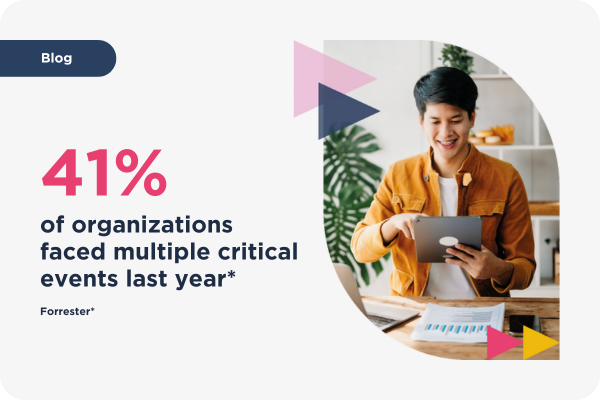Your ultimate guide to cloud financial management
19th April 2024
Michaela Gray
Blog,
Cloud financial management (CFM) is the modern management of finance processes, moving away from traditional methods to meet the needs of modern organisations.
*Blog last updated 08/09/2025

Cloud financial management is not solely about reining in costs; it’s a dynamic approach to maximising the value cloud solutions bring to your organisation, embracing the agility, innovation, and scale that cloud solutions offer.
What is cloud financial management?
CFM solutions are more than just spreadsheets and cost trackers. They offer tools for enhancing cost transparency, control, forecasting, and optimisation. By leveraging CFM, finance teams gain insights into cost origins, operate with minimal unexpected expenses, strategise for dynamic cloud usage, and achieve savings on cloud expenses as teams scale their cloud adoption.
What is FinOps?
Fundamentally, FinOps represents a cultural approach to managing cloud costs, emphasising collective ownership of cloud usage within a framework of established best practices overseen by a central group. Collaborative efforts across cross-functional teams encompassing engineering, finance, product, and more are integral. This collective engagement aims to expedite product delivery while concurrently enhancing financial control and predictability. FinOps encompasses cloud financial management.
The FinOps Lifecyle
The FinOps lifecycle consists of three elements; inform, optimise, and operate.
At any given time, a company can find itself in multiple phases, contingent upon the specific business unit, application, or team undergoing its respective journey.
Inform – visibility and allocation
In the inform phase of the FinOps lifecycle, activities revolve around identifying data sources for cloud cost, usage, and efficiency. Utilising this data for allocation, analysis, and reporting empowers teams to excel in budgeting, forecast trends, establish benchmarking KPIs, and unveil the business value of cloud spending. Accurate spend allocation, achieved through tags, accounts, or business rules, ensures precise reporting. As teams benchmark against others and assess operational efficiency, combining cloud cost data with sustainability metrics enables key performance indicator visibility. The dynamic nature of the cloud demands continuous data-driven decisions for optimal business outcomes.
Optimise – rates and usage
During the optimise phase of the FinOps lifecycle, activities focus on leveraging insights gained in the inform phase to enhance cloud efficiency. Cloud providers offer diverse avenues for resource optimisation, including rightsizing underutilised resources, adopting modern architectures, and automating waste elimination. This phase also entails optimising cloud rates through visibility, analysis, and reporting for effective management of commitment discount pricing models. Collaboration across teams ensures streamlined processes aligned with the organisation’s cloud value goals, ultimately maximising value from the cloud investment.
Operate – continuous improvement and usage
Within the operate phase of the FinOps lifecycle, activities revolve around instituting organisational changes to operationalise FinOps, utilising data and capabilities developed in the inform and optimise phases. This encompasses establishing cloud governance policies, monitoring compliance, and empowering individuals through training programs and automation policies aligned with organisational objectives. Success in FinOps requires fostering a culture of accountability, and promoting collaboration among engineering, finance, and business teams for continuous, data-driven action. Throughout this phase, the goal is iterative development, refining workflows, and evolving FinOps operations through ongoing evaluation and adaptation.
IT and SAM news delivered straight to you
Our Cloud Cost Optimisation Services
Effectively managing cloud expenses is crucial for organisations to ensure they allocate resources judiciously. With our Azure Essentials cost management and optimisation service, your organisation gains comprehensive oversight and authority over its cloud infrastructure. This service streamlines cloud operations, enhancing productivity, collaboration, and overall efficiency for your organisation.
Our cost management and optimisation service for Microsoft 365 (M365) provides your organisation with complete command over your M365 cloud resources. This empowers you to optimize your investments, fostering transformation, collaboration, and knowledge to empower your workforce. Through our M365 service, you gain access to robust Power BI dashboards, meticulous licence tracking, enhanced security measures, and a framework for fostering effective user adoption.
License Dashboard’s SaaS Manager plays a pivotal role in supporting your Cloud Financial Management by closely monitoring SaaS subscriptions and cloud spending within your organisation. It ensures efficient tracking of usage and helps you stay within budgetary constraints. With a focus on managing costs across AWS, Azure, and Google Cloud Platform, our platform becomes an essential tool for organisations prioritising the reduction of expenditure in SaaS subscriptions. By vigilantly overseeing both cloud computing and the potential influx of SaaS applications, we contribute to your financial optimisation efforts.
How License Dashboard will support with your Cloud Financial Management
Contact us to find out more about how we can support your cloud finance management process.
Alternatively, please email us at [email protected] or call 01904 562200 and one of our specialists will be in touch to discuss your requirements.
Speak to a specialistStart maximising your IT budget now
Arrange a free call with one of our specialists now to find out what changes your organisation should be making to maximise your IT budget in 2023.

















